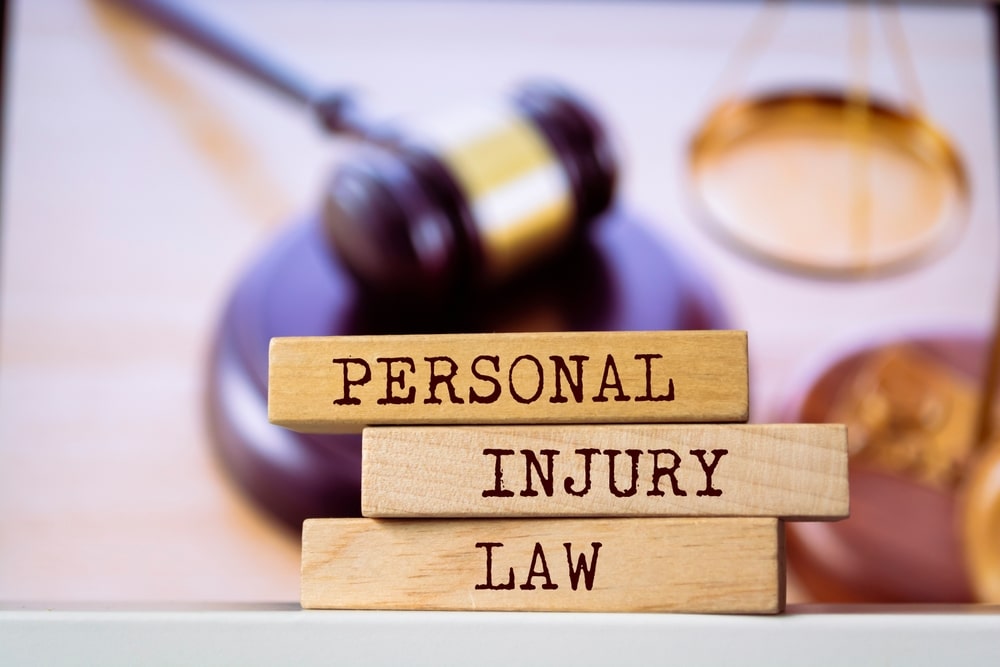January 24, 2024
Seeking Compensation for Long-Term or Permanent Injuries in Pedestrian Accidents: A Guide to Your Legal Rights
Pedestrian accidents often result in severe injuries that can be long-term or permanent, requiring extensive medical treatment and care. Those who suffer such injuries may face not only physical and emotional trauma but also financial strain due to medical expenses, loss of earnings, and other related costs. Seeking compensation is a critical step in addressing the monetary concerns and safeguarding the future financial stability of the injured individual.
The legal framework surrounding pedestrian accidents involves navigating complex laws and insurance policies, which can be daunting for someone recovering from significant injuries. It is essential that victims understand their rights and the various types of damages for which they may be eligible. This includes economic damages like medical bills and lost wages, as well as non-economic damages for pain and suffering.
To secure fair compensation, it is advisable to enlist the help of legal professionals who specialize in personal injury claims. They are equipped to assess the case, determine the degree of fault, collect necessary evidence, and negotiate with insurance companies or represent the victim in court if necessary. Legal expertise ensures that the claim process is handled effectively, maximizing the chances of a suitable settlement for long-term or permanent injuries sustained in pedestrian accidents.
Understanding Pedestrian Accident Claims
When an individual is involved in a pedestrian accident, they may face a range of consequences. The following sections detail the different types of pedestrian accidents and the typically associated long-term and permanent injuries.
Types of Pedestrian Accidents
Pedestrian accidents usually occur in several forms. Crosswalk incidents, where vehicles fail to yield to pedestrians, are common. J-walking accidents involve pedestrians crossing roads outside of designated crosswalks. In school zones and residential areas, drivers are required to exercise heightened caution. Back-up accidents typically happen in driveways and parking lots, where drivers may not see pedestrians behind their vehicles.
Long-Term and Permanent Injuries
These injuries are characterized by their duration and potential to permanently alter one’s life. Traumatic brain injuries (TBIs) can result from pedestrians hitting their heads during an accident, possibly leading to cognitive impairment. Spinal cord injuries might result in partial or full paralysis. Amputations occur when a limb is either severed during the accident or must be surgically removed due to severe damage. Pedestrians can also suffer from chronic pain syndromes or mobility issues that stem from less severe injuries but still require long-term medical treatment and care.
Legal Basics of Compensation
In pedestrian accident cases, compensation is typically rooted in the legal concepts of negligence and personal injury and the relevant statute of limitations. Understanding these concepts is essential for seeking reparation for long-term or permanent injuries.
Negligence and Liability
Negligence is the legal term for the failure to take reasonable care in one’s actions or to act as a reasonable person would under similar circumstances. To receive compensation, the injured party must prove that:
- Duty of Care: The defendant had a legal obligation to the plaintiff to exercise reasonable care.
- Breach of Duty: The defendant failed to meet that standard of care.
- Causation: This breach of duty directly caused the plaintiff’s injuries.
- Damages: The plaintiff suffered actual damages, such as physical injury or monetary loss.
In pedestrian accidents, drivers, pedestrians, and sometimes local governments can hold liability, depending on how their actions contributed to the incident.
Statute of Limitations
The statute of limitations is the period within which one must file a lawsuit following an incident. This period varies by jurisdiction, but it typically ranges from one to six years for personal injury cases. If a party fails to file a claim within the appropriate time frame, they may be barred from seeking compensation altogether. It’s critical for injured parties to be aware of these time constraints to preserve their legal rights.
Building a Strong Case
To ensure rightful compensation for long-term or permanent injuries in pedestrian accidents, the victim must build an undeniable case supported by reliable evidence, thorough medical records, and professional expert testimonies.
Gathering Evidence
Objective Evidence:
- Photos/videos of the accident scene
- Witness statements
- Official accident report
Physical Evidence:
- Clothing and personal items damaged during the incident
Medical Documentation
- Initial Reports:
- Emergency medical services report
- Initial diagnosis and prognostic information
- Ongoing Treatment Records:
- Detailed medical bills and receipts
- Records and notes from doctors, specialists, and therapists
- Permanent Injury Documentation:
- MRI, X-rays, CT scans: Visual evidence of injuries
- Medical assessments: Indicate the permanence of injuries
Expert Testimonies
- Accident Reconstruction Experts: Provide insights into how the accident occurred and the impact on the victim.
- Medical Experts:
- Clarify the severity of injuries
- Corroborate the need for ongoing treatment
- Economic Experts: Assess the financial impact, including lost earnings and future medical expenses.
Compensation Elements
Victims of pedestrian accidents with long-term or permanent injuries should understand the various forms of compensation available to ensure they seek appropriate recompense for their losses. These compensation elements break down into several specific categories: medical expenses, lost wages and earning capacity, pain and suffering, and punitive damages.
Medical Expenses
Pedestrian accident victims are entitled to claim compensation for medical expenses. This typically includes:
- Hospital bills
- Cost of medication
- Rehabilitation services
- Medical equipment
- Long-term healthcare needs
Accurate documentation of all medical treatments received as a result of the accident is essential for this compensation element.
Lost Wages and Earning Capacity
Lost wages and earning capacity reflect the financial losses due to inability to work. Compensation can be claimed for:
- Current lost income
- Future lost earnings due to reduced capacity or disability
- Occupational therapy or retraining costs if applicable
Calculations for future earnings consider career trajectory and inflation.
Pain and Suffering
Compensation for pain and suffering accounts for the non-economic damages suffered by the injured party. Factors include:
- Severity and permanency of the injury
- Physical pain endured
- Mental and emotional distress
- Loss of enjoyment of life
Quantifying pain and suffering requires a detailed impact statement and may involve expert testimony.
Punitive Damages
Punitive damages are awarded in cases where the defendant’s conduct was particularly egregious or reckless. They serve as a deterrent and are not directly tied to the victim’s injuries. Such damages are less common and subject to statutory limitations.
Dealing with Insurance Companies
After a pedestrian accident resulting in long-term or permanent injuries, engaging with insurance companies is a critical step in securing compensation. This process involves understanding the claim process, effectively negotiating settlements, and being aware of insurance bad faith tactics.
Insurance Claim Process
When pursuing an insurance claim, the injured party must first notify their insurance company of the accident. This notification should include pertinent details such as the date, time, location, and a brief description of the incident. Following this, the claimant will need to provide documentation to support their claim, which may include:
- Medical records and bills
- Proof of lost wages
- Police reports
- Witness statements
The insurance company will then review the claim, which involves assessing the policy coverage, the severity of injuries, and liability.
Negotiating Settlements
Negotiating settlements is a nuanced process where the injured party’s representative and the insurer discuss compensation. These negotiations are based on the damages incurred, such as:
- Medical expenses: past, present, and projected future costs
- Loss of income: due to the inability to work
- Pain and suffering: compensation for physical pain and emotional distress
It is important for the claimant to have a clear understanding of what their claim is worth before entering negotiations to avoid accepting a lower settlement.
Insurance Bad Faith Tactics
Insurance bad faith refers to practices where the insurer attempts to avoid their obligation to investigate, process, or pay a claim. Examples of these tactics include:
- Unjustified delays: in investigating or processing claims
- Denial of claim: without a reasonable basis
- Misrepresentation: of policy terms to the claimant to avoid paying out
Individuals should document all interactions with insurance companies and seek legal advice if they suspect bad faith tactics are being used.
The Role of Legal Representation
In pedestrian accidents leading to long-term or permanent injuries, securing competent legal representation is critical for navigating the complex legal process and ensuring rightful compensation.
Hiring a Personal Injury Attorney
When a pedestrian is injured, choosing a Nashville personal injury attorney is a decisive step. Attorneys who specialize in such cases have an intricate understanding of state and federal laws that apply to pedestrian accidents. They help clients in several ways:
- Evaluating the claim: They determine the validity and value of the claim.
- Investigating the incident: Gathering evidence such as traffic camera footage, witness statements, and police reports.
- Communication: Handling all communication with the involved parties and insurance companies, to prevent any inadvertent statements that might jeopardize the case.
Attorney’s Role in Maximizing Compensation
Personal injury attorneys play a vital role in maximizing the compensation for injured pedestrians. They work tirelessly to ensure that all aspects of the claim are thoroughly represented, focusing on:
- Quantifying damages: Calculation of actual damages (medical bills, lost wages) and non-economic damages such as pain and suffering.
- Negotiation: Skillful negotiation with insurance companies to secure a fair settlement.
- Litigation: If a settlement cannot be reached, they are prepared to take the case to court to fight for the client’s interests.
The presence of a knowledgeable attorney can make a significant difference in the outcome of a long-term or permanent injury claim in pedestrian accidents.
Litigation Process
In pursuit of compensation for long-term or permanent injuries in pedestrian accidents, the litigation process involves multiple structured stages. Each phase is integral to building a case aimed towards achieving a just outcome for the injured party.
Filing a Lawsuit
The initiation of a formal lawsuit begins with the filing of the complaint, a legal document outlining the plaintiff’s allegations and the damages sought. This step sets into motion the deadlines and protocols that both parties must follow. The defendant is served with the complaint and provided with a specific time frame, usually 20 to 30 days, to respond with an answer.
Discovery Phase
During the discovery phase, both parties exchange evidence and information through:
- Interrogatories: Written questions requiring sworn answers.
- Depositions: Oral questioning of parties and witnesses under oath.
- Requests for production: Demands for relevant documents, such as medical records.
These tools aim to gather facts, identify witness testimony, and build the foundation of the case.
Trial and Verdict
If a settlement is not reached, the case proceeds to trial where both sides present evidence and arguments. The trial’s structure is as follows:
- Opening Statements: Each attorney introduces the jury to their case.
- Witness Testimony and Cross-Examination: The plaintiff and defendant present their evidence through witnesses, who are then questioned by the opposing side.
- Closing Arguments: Final summaries of the case are made to the jury.
- Jury Deliberation and Verdict: The jury considers the evidence and returns with a verdict. They decide on whether the defendant is liable and, if so, determine the compensation amount.
Each of these trial elements is pivotal in seeking a successful resolution for the plaintiff’s injuries.
Alternative Dispute Resolution
Alternative dispute resolution (ADR) offers a way for parties to resolve disputes without going to court, which can be beneficial in pedestrian accident cases involving long-term or permanent injuries.
Mediation
In mediation, a neutral third party called a mediator assists the injured party and the responsible party in reaching a voluntary agreement. The mediator does not make a decision in the case but facilitates communication and negotiation between the parties. Key advantages of mediation include:
- Confidentiality: The process is private, unlike court proceedings, which are public.
- Control: Both parties retain control over the outcome, as a settlement is not binding unless all parties agree.
Arbitration
Arbitration involves a neutral third party called an arbitrator who hears evidence and arguments from both sides before making a binding decision. Important aspects of arbitration include:
- Efficiency: The process is typically faster than litigation.
- Expertise: Arbitrators often have specific experience in personal injury law, which can be advantageous.
Finality: Decisions in arbitration are generally binding and have limited grounds for appeal, providing a conclusive resolution.
Recovering Compensation
Recovering compensation for long-term or permanent injuries in pedestrian accidents involves two primary financial agreements: structured settlements and lump-sum payments. These arrangements address the needs of the injured individual in different ways.
Structured Settlements
Structured settlements provide compensation through a stream of payments over a period of time. They offer a steady income and can be tailored to meet the future financial needs of the injured party. This method often involves:
- Payment Schedule: Agreed upon by both parties, outlining the amounts and intervals.
- Tax Benefits: Payments are typically tax-free over the life of the settlement.
- Customization: Adjustments can include provisions for future medical costs, living expenses, and inflation.
Lump-Sum Payments
Lump-sum payments grant the entire compensation amount at once. This option allows the injured party to have immediate control over the funds to cover various expenses. Highlights of lump-sum settlements include:
- Full Control: A one-time payment that provides flexibility for investment or large purchases.
- Closure: Settles the claim outright, offering a sense of finality and no future dealings with the payer.
- No Payment Delays: Eliminates the worry of contingency on the payer’s ability to make future payments.
Post-Trial Considerations
Following a trial that resolves a pedestrian accident claim from pedestrian accident lawyer with long-term or permanent injuries, there are critical steps that both the plaintiff and defendant should be prepared to navigate. These steps ensure that the trial’s outcome is honored and the legal process is fully completed.
Appeals Process
If either party is dissatisfied with the trial’s outcome, they have the right to file an appeal. The appeals process involves reviewing the trial’s proceedings for legal errors that could have affected the verdict or the compensation awarded. The party wishing to appeal must file a notice of appeal within a strict deadline, which varies by jurisdiction.
- Notice of Appeal: Must be filed within the deadline set by the court, often 30 days after the judgment.
- Appellate Briefs: Both sides submit written arguments presenting their case to the appellate court.
- Oral Arguments: A hearing may take place where attorneys for both parties present their positions before the appellate judges.
- Appellate Decision: After deliberation, the appellate court may affirm, reverse, or remand the case for a new trial.
Collecting the Awarded Compensation
Once a verdict is reached, the plaintiff must take steps to collect the compensation. Collection of compensation can be straightforward if the defendant pays promptly, but it may require additional legal action if they do not.
- Direct Payment: The defendant or their insurance company pays the full amount directly to the plaintiff.
- Structured Settlement: The parties may agree to a payment plan where the plaintiff receives regular payments over time.
- Enforcement Actions:
- Garnishment: The plaintiff can seek a court order to garnish the defendant’s wages or bank accounts.
- Lien: A lien may be placed on the defendant’s property to secure the judgment amount.




